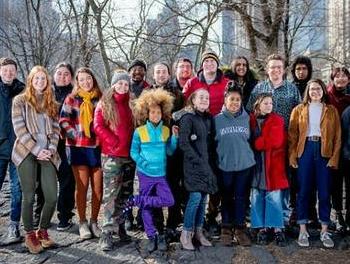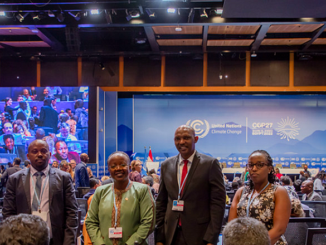
MONTREAL, Quebec, Canada, December 20, 2022 (ENS) – The first global agreement to protect at least 30 percent of global lands and waters by 2030 was reached Monday by 196 world governments, all but the United States. The 15th Conference of the Parties to the Convention on Biological Diversity, COP15, attracted 12,000+ delegates from around the world, who agreed on a package of measures critical to addressing the steepest plunge into extinctions in human history.
Convened under UN auspices, chaired by China, and hosted in Montreal by Canada, COP15 adopted the Kunming-Montreal Global Biodiversity Framework including four goals and 23 targets for achievement by 2030.
The dangers of failing to achieve these goals and targets are very real for at least one in every four species alive today – species such as Javan rhinos, Amur leopards, Sumatran tigers, mountain gorillas, African forest elephants, hawksbill sea turtles, the recently discovered Tapanuli orangutan, and the world’s only living freshwater porpoise, which lives in the Yangtse River.
The new framework quotes from an authoritative 2019 intergovernmental report which states, “An average of around 25 percent of species in assessed animal and plant groups are threatened, suggesting that around one million species already face extinction, many within decades, unless action is taken to reduce the intensity of drivers of biodiversity loss. Without such action, there will be a further acceleration in the global rate of species extinction, which is already at least tens to hundreds of times higher than it has averaged over the past 10 million years.”
The framework aims to “catalyze, enable and galvanize urgent and transformative action by Governments, subnational and local governments, and with the involvement of all of society to halt and
reverse biodiversity loss…”
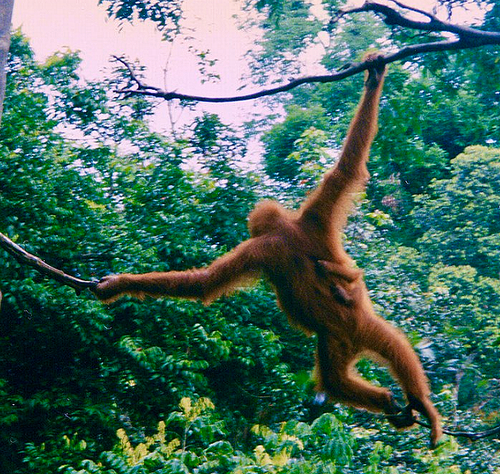
“Biodiversity is fundamental to human well-being and a healthy planet, and economic prosperity for all people. including for living well in balance and in harmony with Mother Earth, we depend on it for food, medicine, energy, clean air and water, security from natural disasters as well as recreation and cultural inspiration, and it supports all systems of life on earth,” the framework states.
Inger Andersen is executive director of the UN Environment Programme, UNEP and immediate past director of the International Union for the Conservation of Nature, IUCN. She told the COP15 opening session, “Nature provides the very essence of life. Technology cannot replace the trees, the soil, the water, and the species that teem in them. We have no other world to flee to. When the web of life falls, we fall with it. In the coming days, you have a unique responsibility to deliver: to agree on the plan to make peace with nature. This responsibility is not a choice between something or nothing. It is a choice between everything or nothing.”
USA on the Outside Looking In
The Convention on Biological Diversity is the only comprehensive global treaty on the conservation and sustainable use of biodiversity. It is a 16 year-old treaty with 196 parties. Only one nation is not a party to the convention – the United States. Although the USA is not a party to the treaty, President Joe Biden committed the United States to the same 30×30 goal during his first days in office.
The United States signed the Convention on Biological Diversity on June 4, 1993. Under President Bill Clinton, the U.S. Senate voted on ratifying the agreement in 1994 but failed to achieve a 67-vote majority due to Republican opposition. Since then, no U.S. president has introduced the treaty for ratification.
The framework agreed Monday in Montreal is meant to guide biodiversity protection for the 196 countries that are parties to the convention.
Today, the planet faces an extinction crisis like none ever before witnessed by humankind, with 28 percent of species across the globe facing extinction.
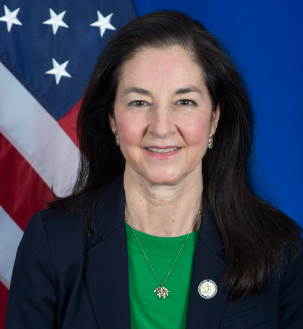
U.S. Assistant Secretary of State for Oceans and International Environmental and Scientific Affairs Monica Medina was named U.S. Special Envoy for Biodiversity and Water Resources in September. She celebrated the new Global Biodiversity Framework as “a win for nature, biodiversity, and humanity,” noting that by conserving at least 30 percent of global lands, fresh water, and ocean by 2030 “we are acting on what the science demands to address the precipitous decline in biodiversity worldwide.”
To further address the loss of species, parties at COP15 adopted ambitious targets on ecosystem restoration, sustainable use of biodiversity, reductions in harmful pollutants, and inclusion of Indigenous peoples and local communities in conservation efforts.
“A global agreement to protect a third of the planet by 2030 is monumental. And recognizing the importance of freshwater and marine habitat as well as centering Indigenous Peoples’ roles and traditions in habitat protection are key,” said Tanya Sanerib, international legal director at the nonprofit Center for Biological Diversity based in Tucson, Arizona.
“My whole life, habitat loss has been a key driver of decreasing biodiversity,” Sanerib said. “While agreements are great, if we’re going to save life on Earth, now we have to roll up our sleeves and do it.”
Financing the New Global Biodiversity Framework
The new framework is expected to serve as a basis for increases in funding for biodiversity protection and conservation.
On December 7 the World Bank estimated that “$700 billion in annual biodiversity conservation financing will be needed over the next decade to meet global biodiversity goals. The world currently spends $120-140 billion.”
The European Commission said in a statement, “The deal will significantly increase the mobilisation of finance for biodiversity from all sources, domestic, international – both public and private – mobilising at least US$200 billion per year by 2030. It will create incentives for domestic and international sources, including from business investment.
It also addresses subsidies harmful to biodiversity, with the commitment to identify by 2025 and eliminate by 2030 a total of at least USD 500 billion per year.
As part of the agreement, the EU subscribed to an international solidarity package, particularly for the most vulnerable countries and the most biodiverse. The new Global Biodiversity Framework Fund established under the Global Environment Facility will be open to financing from all sources.

To improve business action on biodiversity, large and transnational companies and financial institutions will be required to regularly monitor, assess and disclose risks, dependencies and impacts on biodiversity; and provide information to consumers to promote sustainable consumption.
In Montreal, a group of high-income countries, including the United States, the United Kingdom and Australia, pledged to spend more than US$10 billion a year for programs to protect biodiversity, effectively doubling the amount of such funding over the next several years.
Norway announced a contribution of NOK10 million (US$1 million) for the intersessional work on digital sequence information, DSI, data derived from genetic resources. The exact scope of this term and whether the information is openly online or subject to wealth-sharing agreements under the Convention on Biological Diversity is the focus of ongoing discussions. DSI is crucial to research in public health, medicine, biodiversity, plant and animal breeding, and evolution research.
Together with Colombia and other countries, Germany has launched an initiative at COP15 to support developing countries in the swift implementation of their national biodiversity strategies and action plans, NBSAPs, adapted in line with the targets agreed in the new global biodiversity framework. The German government has pledged a total of 29 million euros for the new NBSAP Accelerator Partnership. Colombia and Germany have thus created a new implementation instrument for global biodiversity conservation which will directly contribute to raising the level of ambition.
German Environment Minister Steffi Lemke commented, “We need to reverse the trend in biodiversity loss and worldwide species extinction once and for all. Time is running out. The NBSAP Accelerator Partnership launched today will enable us to start implementing the new global biodiversity framework as soon as it has been adopted. This is a vital investment in our common future and for preserving our foundations of life. We want to establish a genuine partnership in which all stakeholders are involved and take responsibility.”
Calling for a “net zero, nature positive world,” Australia announced plans to increase international public finance for nature up to 2030, building on their commitment to double development assistance funding to AU$2 billion.
At COP15 in Montreal, the international donor community came together December 15 and committed billions of dollars to support the protection and restoration of the natural world.
The commitment, announced through the Donor Joint Statement, is a major breakthrough in addressing the linked challenges of climate change and biodiversity loss as the world sees species extinctions and habitat loss accelerate.
Donors have committed to substantially increase their investment by 2025. These funds will be used to align financial flows from public and private sources for the restoration of nature.
Donor commitments include:
In line with the 50 percent increase of its annual contribution to GEF-8, the Netherlands announced its commitment to increase its total biodiversity-related development finance by 50 percent in 2025, resulting in a target of $150 million for 2025.
Spain intends to double its international funding for biodiversity, aiming to dedicate at least 550 million € of its Official Development Aid for biodiversity over the period 2021-2025.

Canada will provide a new contribution of $350 million to support developing countries – home to the vast majority of the world’s biodiversity – to advance conservation efforts. This funding will support the implementation of the future Global Biodiversity Framework.
Donors also reaffirm significant financial commitments made in the run up to Convention on Biological Diversity, COP15. The UK intends to meet its existing commitment of £3bn finance for climate change solutions that protect, restore, and sustainably manage nature as previously stated from 2021-2026.
France has announced it would double its international finance for biodiversity to reach €1 billion per year by 2025, Germany will increase its international biodiversity funding to €1.5 billion by 2025, as part of the increase of its international climate budget to 6 billion euro annually by 2025 at the latest and the European Commission has pledged €7 billion for biodiversity over 2021-27, in particular for the most vulnerable countries.
In addition, 11 philanthropies have come together to form the Protecting Our Planet challenge and have doubled their support for nature conservation to $5 billion ahead of the COP15. With a strong COP15 outcome philanthropic leaders have indicated they will substantially increase their contributions further. Multilateral development banks are also stepping up and committing to increase their finance for biodiversity and support countries in delivering the new deal for nature being negotiated in Montreal.
Lina Barrera, Vice President of International Policy with the Washington, DC-based nonprofit Conservation International, said, “Conservation International is pleased to see movement toward closing the $700 billion finance gap, which was crucial for reaching a sufficient agreement. However, there is still farther to go as we have not quite reached the level of ambition needed.”
“Recognition of $500 billion in subsidy reform and the creation of a new Global Biodiversity Trust Fund are necessary steps, but we must also continue to foster the flow of resources from the private sector to high-quality and innovative efforts working to protect and conserve nature,” Barrera said.
Negotiators Saved 30×30, But…
The 30×30 target to protect at least 30 percent of land and of sea by 2030 was at serious risk of being removed from the framework. It did remain in the final text, but there is no language that explicitly states which damaging activities are to be excluded from protected areas.
Parts of the framework lack deadlines and numerical targets while also not acknowledging and advocating for a transformative economic and social shift needed to tackle the biodiversity crisis at the systemic level, says Western Canada Wilderness Committee Policy and Conservation Campaigner Charlotte Dawe, speaking from Montreal.
“This agreement is a critical achievement and if implemented fully could take great strides towards combating extinction and conserving biodiversity,” Dawe said. “However, there is much more work to be done and governments must use policy change to achieve the targets.”
“Industry needs strict regulation and mandatory reporting. Currently, businesses are trusted to ‘do the right thing’ when it comes to nature protection, and they fail every time,” Dawe warned.
Throughout the UN Biodiversity Conference there were debates around whether nature-based solutions and nature-positive language open the door for corporate greenwashing.
Concerns were raised these are false solutions and allow industrial operations to carry on unchecked, as long as they “replace” ecosystems elsewhere.
Nature-positive language did not make it into the framework but nature-based solutions did, as well as calls for offsets and biodiversity credits.
“This wording is a crack in the door that could allow industrial corporations to bulldoze on with business as usual while using things like offsets and credits to continue destroying nature,” criticized Wilderness Committee Ontario Campaigner Katie Krelove. “These are tricks corporations use to destroy nature and put a green stamp on their operations, and this language could very well dilute the integrity of the framework.”
But the framework’s final language lists among the global targets for 2030 effective conservation and management of at least 30 percent of the world’s lands, inland waters, coastal areas and oceans, with emphasis on areas of particular importance for biodiversity and ecosystem functioning and services.
The Global Biodiversity Framework prioritizes ecologically-representative, well-connected and equitably-governed systems of protected areas and other effective area-based conservation, recognizing indigenous and traditional territories and practices. Currently 17 percent of the world’s lands and 10 percent of the marine areas are under protection.
Other approved targets in the Global Biodiversity Framework include:
- – Have restoration completed or underway on at least 30 percent of degraded terrestrial, inland waters, and coastal and marine ecosystems
- – Reduce to near zero the loss of areas of high biodiversity importance, including ecosystems of high ecological integrity
- – Cut global food waste in half and significantly reduce over consumption and waste generation
- – Reduce by half both excess nutrients and the overall risk posed by pesticides and highly hazardous chemicals
- – Progressively phase out or reform by 2030 subsidies that harm biodiversity by at least $500 billion per year, while scaling up positive incentives for biodiversity’s conservation and sustainable use
- – Mobilize by 2030 at least $200 billion per year in domestic and international biodiversity-related funding from all sources – public and private
- – Raise international financial flows from developed to developing countries,in particular least developed countries, small island developing States, and countries with economies in transition, to at least US$20 billion per year by 2025, and to at least US$30 billion per year by 2030
- – Prevent the introduction of priority invasive alien species, and reduce by at least half the introduction and establishment of other known or potential invasive alien species, and eradicate or control invasive alien species on islands and other priority sites
- – Require large and transnational companies and financial institutions to monitor, assess, and transparently disclose their risks, dependencies and impacts on biodiversity through their operations, supply and value chains and portfolios
Sports for Nature Framework Adopted
Twenty-three sports organisations, including the International Olympic Committee, IOC, as a founding partner, and the Organising Committee for the Olympic and Paralympic Games Paris 2024, signed the first-ever Sports for Nature Framework on December 16.
The Sports for Nature Framework aims to deliver transformative action for nature across sports by 2030 and beyond. Signatories pledge to adhere to four key principles that will safeguard nature and contribute to the new global goals for biodiversity –
- – protect and avoid damage to important species and habitats,
- – restore key ecosystems,
- – create sustainable supply chains,
- – educate and inspire the wider sporting community to take action for nature.
Executive Secretary of the Convention on Biological Diversity, Elizabeth Mrema said, “There is an urgent need to halt biodiversity loss by 2030 and everyone, including sports and recreation, must play a role. The Sports for Nature Framework is a step in the right direction. It is encouraging to see this level of commitment from sports federations, leagues, clubs, and events, and I challenge all sports organisations to follow suit by taking urgent action for biodiversity.”
This Sports for Nature Framework was co-created by the International Olympic Committee, the International Union for Conservation of Nature, IUCN, and the United Nations Environment Programme, UNEP, in collaboration with the Secretariat of the Convention on Biological Diversity.

Ecosystems Director for UNEP Susan Gardner said, “Already this season, eight major winter sports events have had to be canceled as the playing fields for sport that we used to take for granted are literally melting away. We hope that this new framework can secure support from the whole of the sporting family to take action for nature. We have no time to lose.”
More than 100 representatives from International Federations, National Olympic Committees, regional and national associations, local teams and athletes, along with experts from academia, non-government organizations, science advisors and sports sustainability consultants, provided input on the Sports for Nature Framework. Input was gathered during six formal consultations in November, through an online form and individual consultations.
The Sports for Nature Framework is inspired by and informed by the UN-led Sports for Climate Action Framework, co-launched by UN Climate Change and the IOC in 2018.
As the Sports for Nature report by UNEP released in November found, around 70 percent of sports organizations surveyed said they are interested in taking action for nature as some are already doing on climate.
Dona Bertarelli, a sportswoman, philanthropist, IUCN Patron of Nature and founder of Sails of Change, said, “Sports organizers, administrators, clubs, participants, sponsors and fans are increasingly looking for sport to become a net contributor to the protection and restoration of nature. The new Sports for Nature Framework will help sports not just to mitigate their negative impacts on biodiversity, but to become nature-positive.”
In addition to the IOC, the founding signatories to the Sports for Nature Framework include: The Organising Committee for the Olympic and Paralympic Games Paris 2024, Spanish Olympic Committee, Papua New Guinea Olympic Committee, International Canoe Federation, International Table Tennis Federation, Union Cycliste Internationale, World Rowing, World Sailing, World Skate Federation, International Orienteering Federation, International Waterski & Wakeboard Federation, SAMBO International Federation, World University Games, World Squash Federation, England Squash, Forest Green Rovers, AlUla Sports Club, We Play Green, E1 Series, Extreme E, The Ocean Race, and Ultra Trail du Mont Blanc.
Framework Language Supports Indigenous Wisdom
The role of Indigenous Peoples in meeting species’ habitat goals is central to the new framework,
The framework has strong language in regards to the recognition of Indigenous Peoples’ rights, territories and knowledge. It commits to the full protection of environmental human rights defenders around the world.
The framework “acknowledges the important roles and contributions of indigenous peoples and local communities as custodians of biodiversity and partners in the conservation, restoration and sustainable use. Its implementation must ensure their rights, knowledge, including traditional knowledge associated with biodiversity, innovations, worldviews, values and practices of indigenous peoples and local communities are respected, documented, preserved with their free, prior and informed consent, including through their full and effective participation in decision-making, in accordance with relevant national legislation, international instruments, including the United Nations Declaration on the Rights of Indigenous Peoples, and human rights law…”
But on the last day of the conference the Democratic Republic of the Congo, DRC, highlighted the need to conserve biodiversity and respect the rights of Indigenous Peoples and local communities. He expressed concerns regarding the financial mechanism and resource mobilization, and emphasized that he is “unable to support the adoption of the GBF in its current state.”
Steven Guilbeault, Minister of Environment and Climate Change and Parks Canada, who was in charge of Canada’s work with international colleagues on the Kunming-Montréal Global Biodiversity Framework, says that among Canada’s main goals were respecting the rights and roles of Indigenous peoples, and addressing the key drivers of biodiversity loss, such as pollution and overexploitation of nature.
These elements were agreed upon in the final Framework, Guilbeault said. “In Montréal, we have risen to the challenge and united as one global community to address the crisis faced by nature. We agreed on an ambitious path forward for our planet, and have given ourselves the tools to turn the tide,” Guilbeault said. “This is a historic moment for nature, and it is our only chance to save what we love and hold dear, before it is too late.”
Canada’s Commitments
As the COP15 host country, Canada made major new commitments and investments that include:
- – Up to C$800 million to support up to four Indigenous-led conservation initiatives. Once completed, these projects could protect an additional one million square kilometres.
- – The Canada-Yukon Nature Agreement, the first agreement of its kind with any province or territory. This agreement will advance nature conservation and protection across the territory and supports Indigenous leadership in conservation.
- – C$350 million in new and additional funding to support developing countries in protecting nature. Canada also joined like-minded countries in a joint donor statement that sets out billions of dollars from the international community to protect and restore nature.
- – C$255 million toward projects to help developing countries build a strong future, including by fighting climate change, protecting nature and supporting resilient local economies. Most of this funding will go toward the UN Convention on Biological Diversity’s Global Environment Facility – making Canada its 7th-largest donor country.
- – The Governments of Canada and Manitoba, together with the Seal River Watershed Alliance, will work together on a feasibility assessment for an Indigenous protected area in the Seal River Watershed. Located in northern Manitoba, the Seal River Watershed is one of the richest carbon sinks in the world, and one of the world’s largest remaining ecologically intact watersheds.
- – C$227.5 million in funding for the next steps in the ban on harmful single-use plastics, as well as new support for ocean restoration, conservation, and research across Canada.
“As countries commit to ambitious action, momentum must continue to ensure this new set of goals is achieved,” Environment Minister Guilbeault said. “At home and on the world stage, Canada will continue to lead on our shared work to protect nature and build a strong, healthy future for people everywhere.”
“Now, the hard work begins, said Barrera of Conservation International. “It is time to make good on the promises made in Montreal and ensure that the targets in the framework are met. It will take continued commitment and finance to avoid the mistakes of the past. With one million species at risk of extinction there is no time to waste and Conservation International looks forward to working toward a nature positive world in the places that people and other species depend on most.”
UNEP Executive Director Andersen emphasized that implementation is now key, saying, “Success will be measured by our rapid and consistent progress in implementing what we have agreed to. The entire UN system is geared to support its implementation so we can truly make peace with nature.”
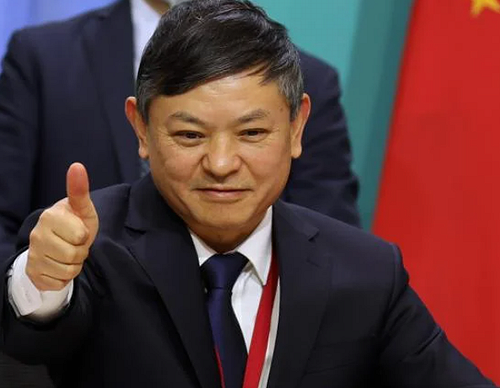
Speaking at a press conference Tuesday, COP15 President Huang Runqiu, who also serves as China’s minister of ecology and environment, emphasized the cooperative relationship between China and Canada and said Montreal is a lovely city that brought luck to summit negotiators.
Huang said actions agreed in Montreal include establishing a Global Biodiversity Framework Fund in 2023 and starting an open-ended work group discussion for reporting to COP16, which will be held in Turkey at the end of 2024.
Huang said, “We will comprehensively guide and promote the relevant process of inter-sessional meetings before COP16, actively guide the implementation of the framework goals, and ensure that relevant decisions passed are fully implemented.”
Featured image: Delegates from across Latin America celebrate the new Global Biodiversity Framework agreed at the 5th Conference of the Parties to the Convention on Biological Diversity, COP15.

